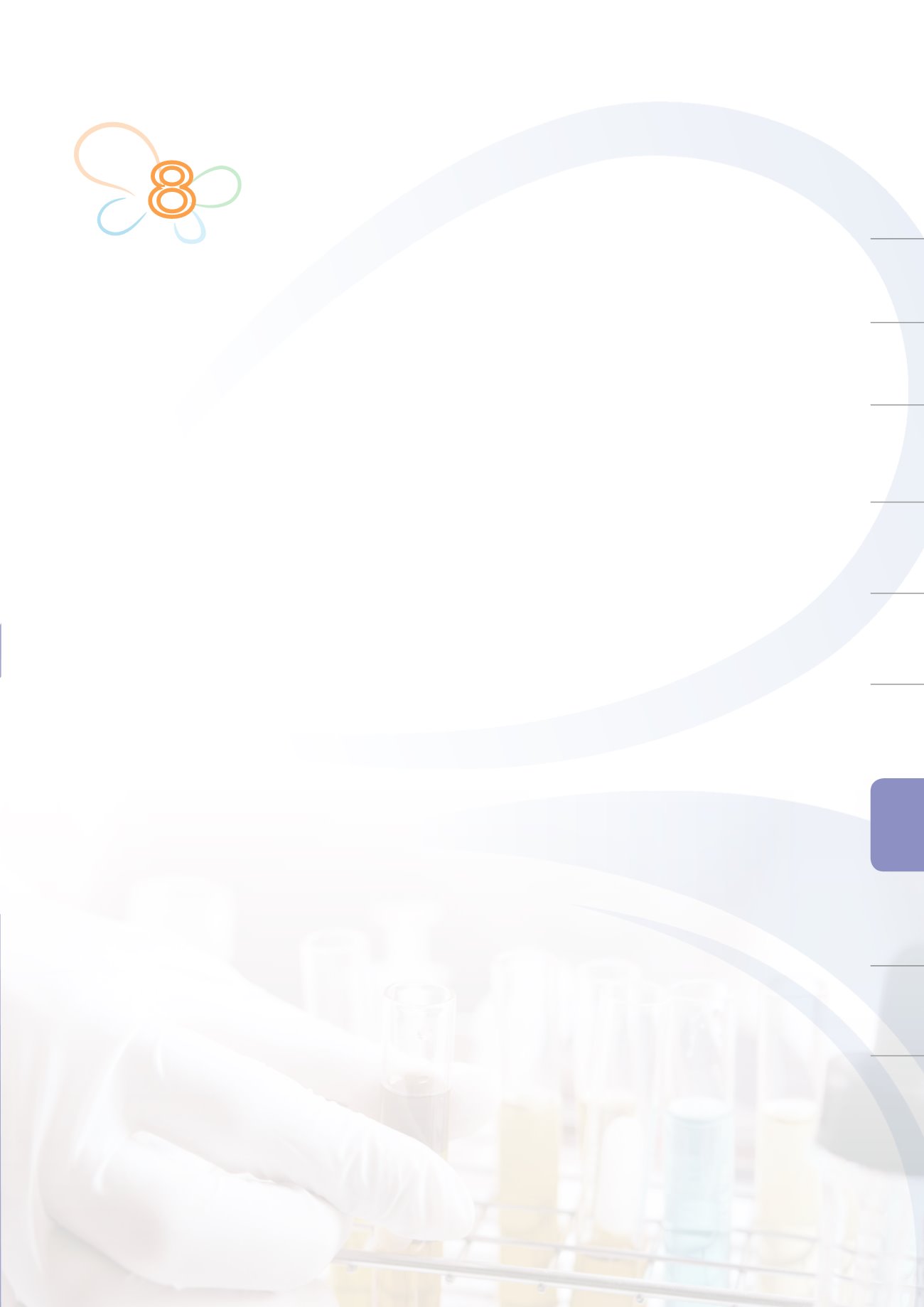

2015 Annual Report
79
Risk Assessment
Management and
Research Outcomes
Cosmetics
Management
Appendix
National
Laboratory and
Testing Network
Risk Communication
and Consumer
Protection
International
Cooperation and
Cross-Strait Exchange
Food
Management
Medicinal
Products
Management
Policy and
Organization
Controlled
Drugs
Management
Medical
Devices
Management
8
The growing complexity and diversity of engineering technologies in food, medicinal products, medical
devices and cosmetics make the managment and measurement of them more challenging than ever
before. TFDA continues to advance laboratory testing capabilities and estibilish fast, reliable, and
internationally harmonized methods in order to determin untargets, contingencies, and contaminants
which may hurt product qualities and public health. TFDA persistently strengthen the testing capacity
and quality of local health bureaus, and develop an efficient network of specialized test locations, to
improve local testing capabilities. Private laboratories were also accredited in order to support testing
required by government agencies, consumer associations, and manufacturers which need internal
quality control and export requirements. In response to product safety contingencies, the laboratory
network is mobilized to implement emergency inspections. Through the emergency response
mechanism, TFDA announces a list of private laboratories to the public for reference use, and helps the
manufacturers to perform voluntary management and testing from the source.
Section 1 Mission of the National Laboratory
Current Status
The National Laboratory is in charge of testing, formulating testing methods, conducting research and
investigations, supplying standards, and providing technical support and assistance to regional centers and
health bureaus for medicinal products, food products, and cosmetics in the country. TFDA aggressively
promotes the persistent development of the National Laboratory and launches into the perfection.
Policies and Outcomes
1. Improve Analysis Capabilities
(1) A total of four precision instruments and equipment were procured, namely the MALDI-TOF mass
spectrometer for microbial identification, a gas chromatograph equipped with tandem mass
spectrometer, a pyrolysis analyzer, and an elemental analyzer equipped with tandem isotope ratio
mass spectrometer. Technical documents were also composed for use by various fields.
(2) TFDA held three unknown material identification training sessions which were attended by 221
individuals. Course contents included applications of chromatography / mass spectroscopy in
food testing, techniques and practical applications of organic spectroscopy, and practical analytical
techniques for determining the authenticity of honey and its products.
2. Analysis Mission
(1) Basic Testing: Registration testing for medical devices, cosmetics, health food, special nutrition
supplements, and food additives; lot release for biologics (detailed statistics are provided in
Appendix 1 Annex Table 14); as well as testing for emergency eventing. A total of 3,460 tests have
been carried out.
(2) Cooperative Testing: TFDA provides testing support for the local health bureaus to test the
auditing and sampling specimens which the agency is incapable of testing independently,
consumer complaints, and complex food poisoning incidents. These include tests for cosmetics,
illegal medical products, and testing for the presence of pharmaceutical adulterants in prescription
Chinese herbal medicines or food products. A total of 2,275 tests were carried out, which
identified 501 nonconformities or tested positive for pharmaceutical ingredients.
National Laboratory and Testing Network



















